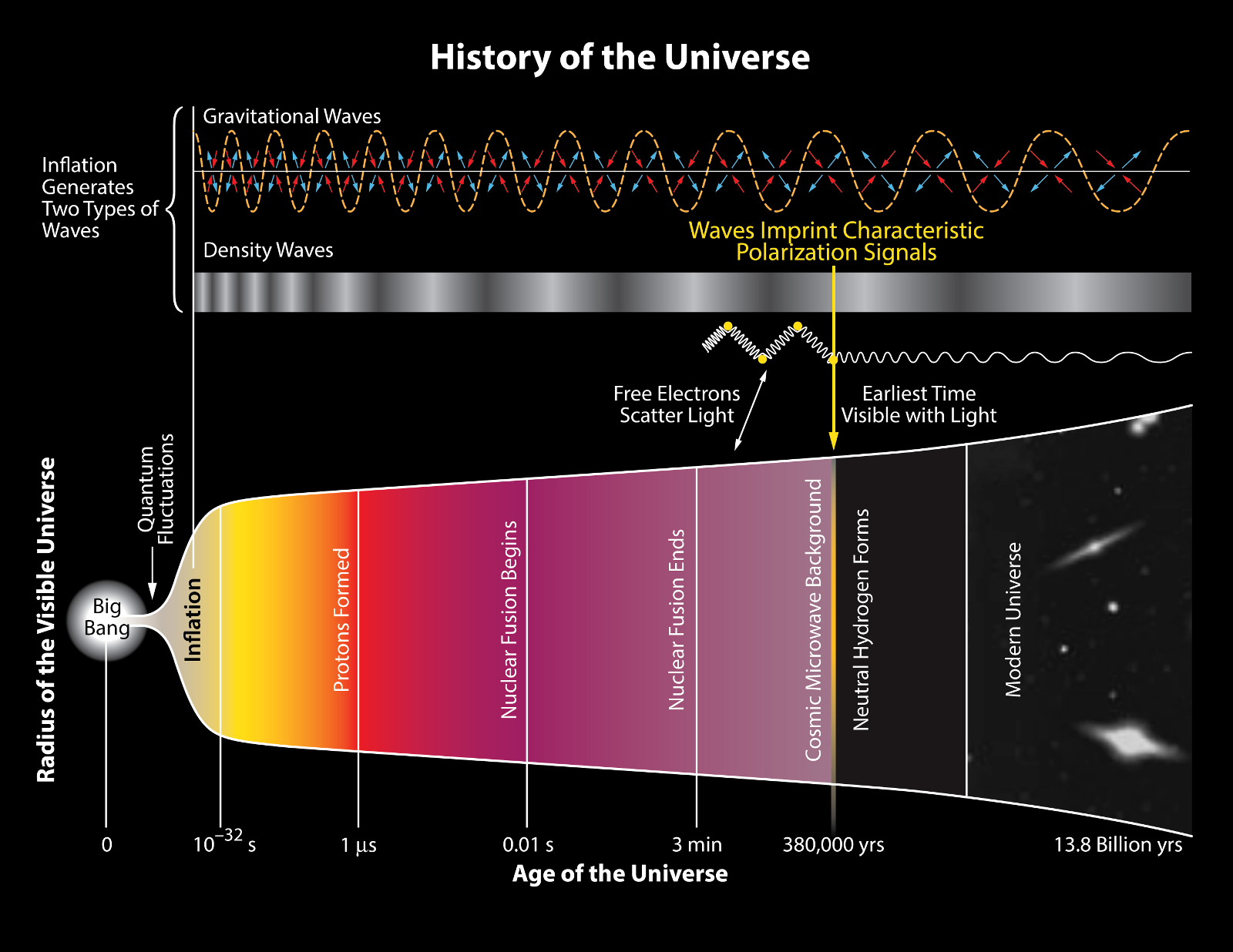Traces of gravitational waves from the Big Bang were found in relic radiation.
On March 17, the Harvard-Smithsonian Center for Astrophysics published the results of a research project BICEP2, which allow us to say with confidence that scientists were finally able to detect traces of gravitational waves that occurred at the moment of the Big Bang. This discovery is comparable in importance to the discovery of the Higgs boson - it is a direct confirmation of the inflationary model of the Universe , developed in the early 80s by Alan Guth and Andrey Linde. This model assumes that the expansion of the Universe in the first moments after the Big Bang happened much faster than the standard model of the hot Universe predicts.

Polarization "curls" in relic radiation caused by the gravitational waves of the Big Bang
The inflationary model solves a number of problems that confronted the standard model, in particular, the problem of large-scale homogeneity and isotropy of the Universe. In accordance with the model of the hot Universe, at the initial stages of its existence, the Universe consisted of a large number of areas not connected in any way by causal relationships, but observations indicate that the Universe is very homogeneous. In the inflationary model, the expansion rate of the Universe is such that its entire observable volume is the result of the expansion of a single, causally related region.

')
The BICEP2 telescope allows you to measure fluctuations in the temperature of microwave radiation with an amplitude of just ten millionth of a kelvin. It is located in Antarctica, as there is exceptionally clean and dry air. With the help of the detectors of the BICEP2 telescope, it was possible to obtain images of the relict background radiation at a time that was only 380,000 years from the Big Bang, when the Universe became transparent to light. In this radiation, a characteristic polarization pattern has been discovered, which is caused by the gravitational waves of the Big Bang.

In the foreground - the telescope BICEP2
You can download a detailed report on the BICEP2 project site .

Polarization "curls" in relic radiation caused by the gravitational waves of the Big Bang
The inflationary model solves a number of problems that confronted the standard model, in particular, the problem of large-scale homogeneity and isotropy of the Universe. In accordance with the model of the hot Universe, at the initial stages of its existence, the Universe consisted of a large number of areas not connected in any way by causal relationships, but observations indicate that the Universe is very homogeneous. In the inflationary model, the expansion rate of the Universe is such that its entire observable volume is the result of the expansion of a single, causally related region.

')
The BICEP2 telescope allows you to measure fluctuations in the temperature of microwave radiation with an amplitude of just ten millionth of a kelvin. It is located in Antarctica, as there is exceptionally clean and dry air. With the help of the detectors of the BICEP2 telescope, it was possible to obtain images of the relict background radiation at a time that was only 380,000 years from the Big Bang, when the Universe became transparent to light. In this radiation, a characteristic polarization pattern has been discovered, which is caused by the gravitational waves of the Big Bang.

In the foreground - the telescope BICEP2
You can download a detailed report on the BICEP2 project site .
Source: https://habr.com/ru/post/216289/
All Articles